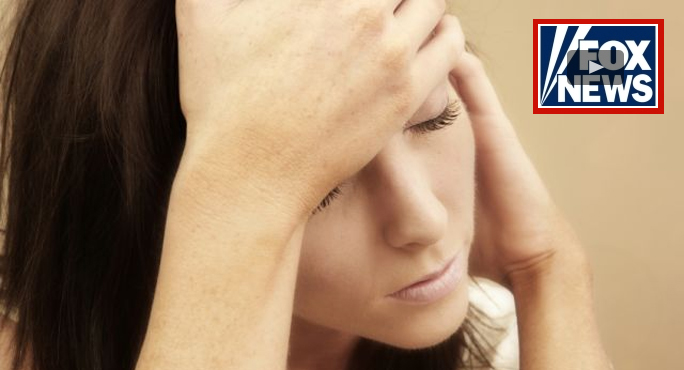
Click on image above to watch “Natural Remedies for Migraine Headaches” on Fox News
How awful are migraine headaches? If you’ve ever had one, you know that answer to that question.
Named after the Greek hemicrania, a migraine is a moderate to severe throbbing headache on one side of the head that is usually accompanied by acute nausea and greatly increased sensitivity to light.
Curiously, migraines are often preceded by an aura, in which people see flashing lights, blind spots or irregular lines, numbness or tingling in the face and hands, distorted sense of smell or taste and mental fogginess. About one in every five migraine sufferers experience auras.
A wise physician once said: “Patients with migraines know precisely when, how often and how long their headaches strike. They often come in with long lists. When you have a patient with lists, you have a patient with migraine.”
There is evidence that eliminating foods that contain the natural compound tyramine can reduce occurrence and severity of migraines. Aged, cured and smoked cheeses and meats contain tyramine. Chocolate, alcoholic beverages, and most soy foods, including soy sauce, contain tyramine. This compound increases production of the adrenal hormones epinephrine and norepinephrine, and the neurotransmitter dopamine – activity that significantly affects the brain and can trigger migraines.
Conventional drug treatment of migraines includes a predictable array of pain relievers, including ibuprofen, acetaminophen, aspirin, naproxen and more. Sometimes these work; sometimes they don’t.
Migraine suffers can receive injections or nasal sprays of dihydroergotamine, an exotic drug made from the same toxic fungus ergot as the famous mind-bending psychedelic LSD.
Yet other remedies enjoy success with many cases of migraines, and deserve to be better known. Traditional medicine yields knowledge that has been blended with science to produce effective, natural relief. Things like feverfew, butterbur, hyperbaric oxygen therapy and acupuncture all demonstrate real benefits.
Feverfew (Tanacetum parthenium)
Derived from the leaves of the plant, feverfew is used primarily to treat migraine headaches. Feverfew extracts possess antiprotozoal properties. Although much of its activity is attributed to a compound parthenolide, a parthenolide-free extract of feverfew demonstrated free radical-scavenging properties, affording protection against UV-induced sun damage. In clinical trials, a feverfew extract reduced the frequency of migraine attacks and a feverfew/ginger formulation prevented mild headache before the onset of moderate to severe headache in patients with migraine.
Migrafew is a feverfew product that is backed by good science.
Feverfew Standardized Extract, Nature's Way - 60 Capsules
Butterbur (Petasites hybridus)
Butterbur is a shrub that grows in Europe and parts of Asia and North America -- typically in wet, marshy ground. The name, butterbur, is attributed to the traditional use of its large leaves to wrap butter in warm weather. Butterbur has historically been used for a variety of health issues such as pain, headache, anxiety, cough, fever, and for gastrointestinal and urinary tract conditions. It has also been used topically to improve wound healing. Today, traditional or folk uses include nasal allergies, allergic skin reactions, asthma, and migraine headache. Butterbur is actually surprisingly effective in preventing migraine headaches as well. Using an extract from butterbur root over 16 weeks can reduce the number and severity of migraine headaches by almost half. Doses of at least 75 mg twice daily seem to be necessary for best results.
Petadolex Pro-Active, a brand of butterbur, has demonstrated effectiveness in relieving migraines.
Hyperbaric Oxygen Therapy
Hyperbaric oxygen treatment involves breathing pure oxygen in a pressurized room. This results in increased stem cell production, which effects healing throughout the entire body. Three studies reported the number of patients who had significant relief from their migraines within 40 to 45 minutes of hyperbaric therapy. Although the studies did not specify each patients' response to treatment, they reported a significant increase in the proportion of patients who had relief with hyperbaric oxygen compared to a placebo.
Acupuncture
In a study published in the British Medical Journal, researchers randomly divided 401 adults aged 18-65 years old with chronic headache (at least two headaches a month) – into two treatment groups. Participants had a history of having mostly migraine headaches. One group received up to 12 acupuncture sessions during a three-month period in addition to standard medical care, and the other group received standard care alone.
A year later, researchers found that those who received acupuncture:
Experienced 22 fewer days with headaches;
Used 15 percent less medication;
Made 25 percent fewer visits to their doctor;
And took 15 percent fewer days off sick from work than the control group.
The study showed that compared with standard medical care, acupuncture offers substantial benefits in preventing headaches and improving the quality of life for people who suffer from frequent headaches, especially migraines.
Acupuncture is commonly used to treat other types of chronic pain, but researchers noted this is the first large-scale study to examine the effectiveness of acupuncture under real-life conditions. They said the results indicate that health insurance coverage of acupuncture services should be expanded to include the treatment of chronic headaches and migraine.
If you are a migraine sufferer, trying one or more of the therapies listed above may significantly reduce the occurrence and severity of your migraines, and improve your quality of life. But it's important to talk with your doctor because he or she can help you decide what’s best for you based on your medical history.

